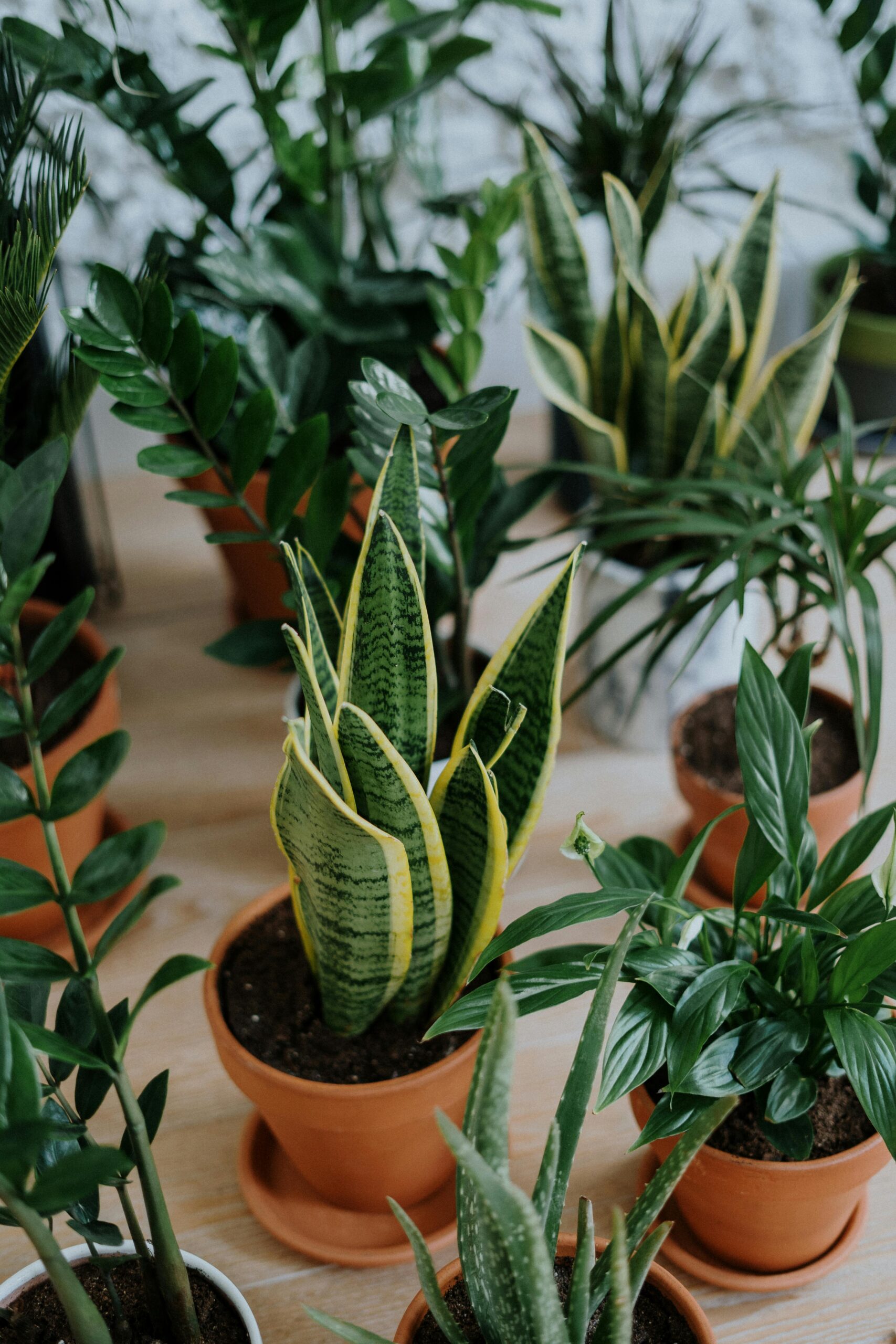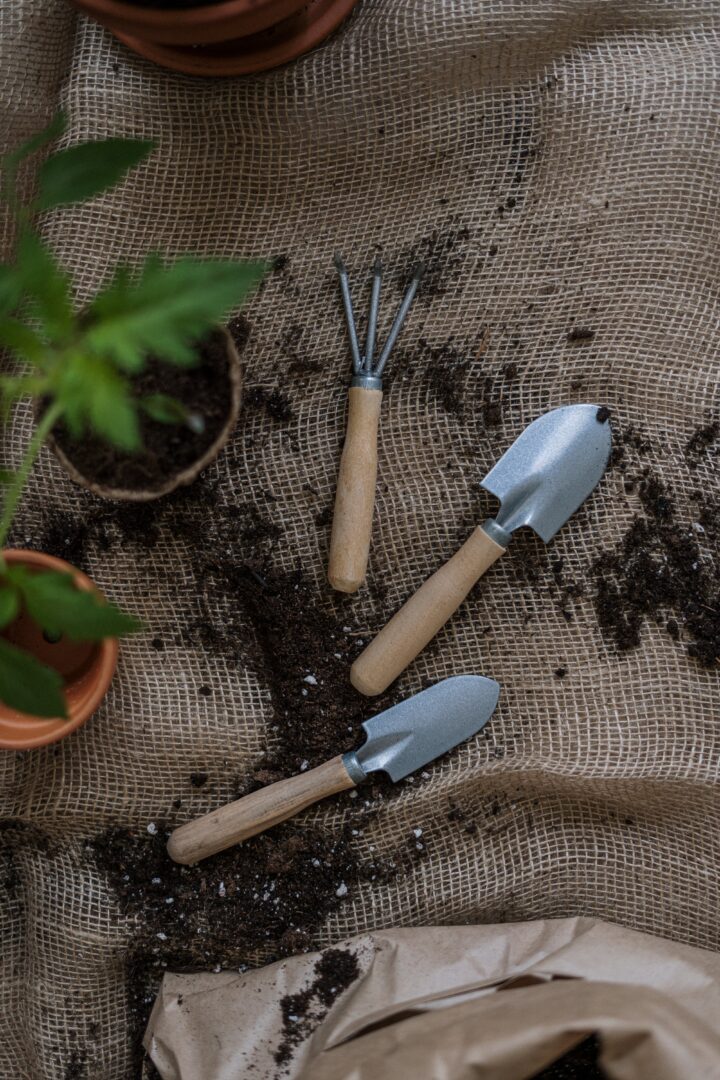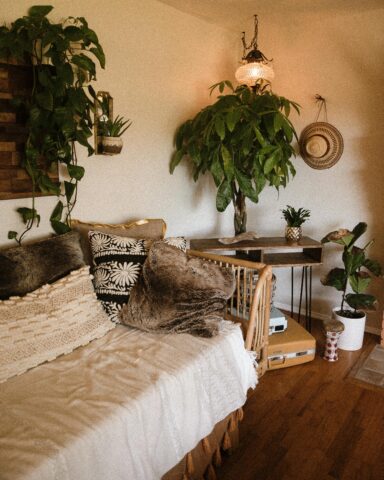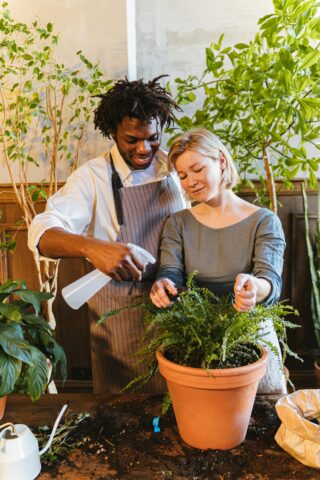Overview of container gardening
Container gardening is a delightful and practical way to bring the beauty of nature into small spaces. Whether you have a cozy balcony, a tiny patio, or even just a sunny windowsill, you can create a vibrant and thriving garden with the help of containers. This versatile gardening technique allows you to grow a variety of plants in portable pots, giving you the freedom to design your own miniature oasis.
Container gardening offers numerous benefits that make it an ideal choice for both beginner and seasoned gardeners alike. One of the most significant advantages is its limited space requirements. Unlike traditional gardening, which often requires vast expanses of land, container gardening allows you to cultivate plants in a compact and manageable area. This makes it an excellent option for urban dwellers and individuals with limited outdoor space.
In addition to its space-saving nature, container gardening also offers versatility and mobility. With containers, you have the freedom to move your plants around, allowing you to experiment with different arrangements and adapt to changing weather conditions. This flexibility is particularly useful if you live in an area with harsh winters or scorching summers, as you can easily bring your plants indoors or relocate them to a more suitable spot.
Another advantage of container gardening is its easy maintenance. Unlike traditional gardens, which often require extensive weeding and tilling, container gardens are comparatively low-maintenance. With proper planning and care, you can create a self-contained ecosystem that requires minimal effort to keep in pristine condition. This makes container gardening an excellent choice for busy individuals or those who are new to gardening and want to start with a manageable project.
In the following sections, we will delve deeper into the world of container gardening and provide you with a step-by-step guide to help you get started. Whether you’re a beginner looking to embark on your first gardening adventure or an experienced gardener seeking a new and exciting challenge, this article will equip you with the knowledge and tools you need to create a flourishing container garden. So, let’s roll up our sleeves and dig into the wonderful world of container gardening!
Continue reading: gardening tips for beginners
Benefits of Container Gardening
Container gardening offers a plethora of benefits that make it an ideal choice for both novice and experienced gardeners. Whether you have limited space, a desire for versatility and mobility, or simply want an easier way to maintain your plants, container gardening has you covered.
Limited space requirements: One of the most significant advantages of container gardening is its ability to thrive in small spaces. If you live in an apartment, have a tiny backyard, or even just a balcony, container gardening allows you to bring the beauty of nature to your surroundings. By utilizing various sizes and types of containers, you can transform any nook or cranny into a vibrant oasis. This makes it an excellent option for urban dwellers or anyone with limited outdoor space.
Versatility and mobility: Another remarkable aspect of container gardening is its versatility and mobility. Unlike traditional gardens, where plants are firmly rooted in the ground, container gardens can be easily moved around to suit your needs. This flexibility allows you to experiment with different layouts, rearrange your plants for aesthetic purposes, or even bring your garden indoors during harsh weather conditions. With container gardening, you have the freedom to change the scenery as you please, adding a sense of adventure to your gardening experience.
Easy maintenance: For those who are new to gardening or have a busy lifestyle, container gardening offers the advantage of easy maintenance. With a smaller space to manage, you can focus your efforts on a select number of plants, giving each one the attention it deserves. Container gardens are also less prone to weeds and pests, as the confined space makes it easier to monitor and control any potential issues. Additionally, container gardens require less water and fertilizer compared to traditional gardens, making them a more sustainable choice. So, if you’re looking for a low-maintenance gardening option that still yields beautiful results, container gardening is the way to go.
By embracing container gardening, you unlock a world of possibilities for creating a stunning garden in even the most limited spaces. Its versatility, mobility, and easy maintenance make it an attractive choice for anyone looking to embark on a gardening journey. So, whether you’re a beginner or a seasoned gardener, consider adding container gardening to your repertoire. For more gardening tips and inspiration, check out our gardening tips for beginners and beginner’s guide to gardening guides.
Choosing the Right Containers
When it comes to container gardening, choosing the right containers is crucial for the success of your plants. The size and material of the containers, along with proper drainage and consideration of plant needs, are key factors to keep in mind.
Container Size and Material: The size of the container plays a significant role in the growth of your plants. A container that is too small may restrict root development, while one that is too large can lead to overwatering. It’s essential to strike a balance and select a container size that is appropriate for the plant you wish to grow.
Additionally, consider the material of the container. While there are various options available, such as clay, plastic, or ceramic, each material has its pros and cons. Clay pots, for instance, are porous and allow for better airflow to the roots, but they can dry out quickly. On the other hand, plastic containers retain moisture better but may not provide as much breathability.
Ensure Proper Drainage: Adequate drainage is crucial to prevent waterlogged roots and root rot. Make sure your containers have drainage holes at the bottom to allow excess water to escape. This will prevent the soil from becoming waterlogged and damaging your plants. If you find a container that you love but it doesn’t have drainage holes, you can drill some yourself or use a layer of stones or broken pottery at the bottom to create a reservoir for excess water.
Select Containers Based on Plant Needs: Different plants have different needs, and selecting the right container based on those needs is essential. Some plants, like herbs or lettuce, have shallow root systems and can thrive in smaller containers. Others, like tomatoes or peppers, require deeper containers to accommodate their extensive roots. Research the specific requirements of the plants you want to grow and choose containers that can accommodate their growth.
By considering container size and material, ensuring proper drainage, and selecting containers based on plant needs, you are setting yourself up for success in container gardening. Remember, container gardening is a versatile and convenient way to enjoy plants even if you have limited space or lack a garden. If you’re new to gardening, check out our gardening tips for beginners or explore indoor gardening for beginners for more insights.

Selecting the Right Plants
When it comes to container gardening, selecting the right plants is crucial for success. Whether you’re a beginner or have some experience, choosing the appropriate plants will set the stage for a thriving garden. Let’s explore some key considerations to keep in mind when selecting your plants.
Start with easy-to-grow plants: As a beginner, it’s wise to begin with plants that are known for their resilience and adaptability. Opt for varieties that are low-maintenance and forgiving, such as herbs like basil or mint, leafy greens like lettuce or spinach, or colorful flowers like petunias or marigolds. These plants are often more tolerant of fluctuations in watering and temperature, making them a great choice for beginners.
Consider light and temperature requirements: Different plants have varying light and temperature needs. Before selecting plants for your containers, take a moment to assess the conditions in your chosen location. Is it sunny, partially shaded, or mostly shady? Does it tend to get hot or stay cool throughout the day? Understanding these factors will help you choose plants that will thrive in their environment. For example, sun-loving plants like tomatoes or peppers will need ample sunlight, while shade-loving plants like ferns or begonias will prefer a shadier spot.
Match plants based on growth habits: It’s important to consider the growth habits of the plants you select, especially when combining multiple plants in a single container. Some plants, like trailing vines or cascading flowers, are perfect for spilling over the edges of a container, creating a beautiful cascading effect. Others, like tall, upright plants, can act as a centerpiece or provide vertical interest. By choosing plants with complementary growth habits, you can create visually appealing arrangements that make the most of your container space.
Remember, container gardening offers a world of possibilities, even if you have limited space. With the right plants, you can transform your balcony, porch, or even windowsill into a vibrant garden oasis. Don’t be afraid to experiment and try new combinations. And if you’re looking for more gardening tips and inspiration, be sure to check out our article on gardening tips for beginners.
Now that you have a good understanding of how to select the right plants for your container garden, let’s move on to the next step: Soil and Fertilizer.
Soil and Fertilizer: Nourishing Your Container Garden
To ensure the success of your container garden, it is essential to provide your plants with the right soil and fertilizers. The soil in containers differs from that found in traditional garden beds, as it needs to be well-draining and nutrient-rich. In this section, we will explore the key considerations for soil and fertilizer in container gardening.
Use well-draining potting soil
When it comes to container gardening, using the right type of soil is crucial. Opt for well-draining potting soil, specifically formulated for container plants. This type of soil is lightweight, allowing for proper airflow and preventing waterlogged roots. It typically consists of a blend of organic matter, such as peat moss or coconut coir, and inorganic materials like perlite or vermiculite. These components promote drainage while retaining enough moisture for plant roots to thrive.
Add organic matter for nutrients
To provide your plants with essential nutrients, it is important to incorporate organic matter into the potting soil. Organic matter, such as compost or well-rotted manure, enriches the soil with beneficial microorganisms and releases nutrients slowly over time. This natural fertilizer promotes healthy root development and enhances overall plant growth. Consider making your own compost or purchasing organic amendments to improve the fertility of your container garden.
Consider slow-release fertilizers
In addition to organic matter, slow-release fertilizers are an excellent option for nourishing your container plants. These fertilizers come in granular or pellet form and provide a steady supply of nutrients over an extended period. Slow-release fertilizers are convenient and minimize the risk of over-fertilization, which can damage plants. Remember to follow the manufacturer’s instructions for proper application and dosage.
By using well-draining potting soil, incorporating organic matter, and considering slow-release fertilizers, you can ensure that your container garden receives the nourishment it needs to flourish. Remember to monitor your plants’ growth and adjust your fertilization routine accordingly.
For more gardening tips for beginners, please check out our comprehensive guide on beginner’s guide to gardening. Whether you’re interested in indoor gardening for beginners or learning how to start a garden from scratch, we have you covered with valuable insights and practical advice. Don’t forget to equip yourself with the right tools by exploring our guide on gardening tools for beginners. Happy gardening!
Container Gardening Techniques
Container gardening offers a world of possibilities, allowing you to create a vibrant and flourishing garden in even the smallest of spaces. Once you have chosen the right containers, selected the perfect plants, and prepared the soil, it’s time to delve into the essential techniques that will ensure the success of your container garden. In this section, we will explore the importance of proper watering, the art of pruning and trimming, and how to effectively deal with pests and diseases.
Proper watering is crucial for the health and vitality of your container garden. Each plant has its own unique watering needs, so it is essential to understand the requirements of the plants you have chosen. Overwatering can lead to root rot and other moisture-related issues, while underwatering can result in wilting and stunted growth. To determine if your plants need water, simply insert your finger into the soil up to the first knuckle. If it feels dry, it’s time to water. However, if it feels moist, hold off on watering for a day or two. Remember, it’s better to underwater than to overwater, as most plants can recover from slight dehydration more easily than they can from waterlogged soil.
Pruning and trimming are essential techniques for maintaining the shape, size, and overall appearance of your container plants. Regular pruning helps promote healthy growth and encourages the development of more flowers or fruits. When pruning, always use sharp and clean pruning shears to minimize damage and prevent the spread of diseases. Start by removing any dead, damaged, or diseased branches or leaves. Next, selectively trim back any overgrown or leggy growth to maintain a compact and well-proportioned shape. Additionally, remember to pinch off spent flowers to encourage continuous blooming.
Dealing with pests and diseases is an inevitable part of gardening, but with proper care and attention, you can minimize their impact on your container garden. Regularly inspect your plants for signs of pests such as aphids, mealybugs, or spider mites. If you spot any unwelcome visitors, you can try using natural remedies like insecticidal soap or neem oil, or introduce beneficial insects like ladybugs or lacewings to control the pest population. When it comes to diseases, prevention is key. Avoid overwatering, provide adequate air circulation, and maintain good hygiene by removing any diseased plant material promptly. If necessary, you can treat certain diseases with appropriate fungicides or consult with a local gardening expert for guidance.
By mastering these container gardening techniques, you will be well on your way to creating a thriving and beautiful garden in the limited space available to you. Remember to check out our other guides for more gardening tips for beginners, such as indoor gardening for beginners or how to start a garden from scratch. With the right knowledge and a little bit of dedication, you can transform any space into a green oasis. So grab your gardening tools and get ready to embark on an exciting journey of plant cultivation and natural beauty. Happy gardening!
Tips for Successful Container Gardening
Container gardening can be a rewarding and fulfilling experience, allowing you to bring life and beauty to even the smallest of spaces. To ensure the success of your container garden, there are a few key tips to keep in mind. Whether you’re a seasoned gardener or just starting out, these tips will help you create a thriving and vibrant container garden.
Choose the right location: When it comes to container gardening, location is everything. Before you start planting, take some time to assess the available space. Consider factors such as sunlight exposure, wind patterns, and accessibility. Ideally, you’ll want to place your containers in an area that receives at least six hours of sunlight per day. This will provide your plants with the energy they need for healthy growth. If you’re limited on space, consider exploring indoor gardening as an option, where you can grow plants indoors with the help of artificial light.
Provide adequate sunlight: Sunlight is essential for the growth and development of plants. When selecting a location for your containers, aim for a spot that receives ample sunlight throughout the day. If you’re gardening indoors, position your containers near a window that gets plenty of natural light. Keep in mind that different plants have varying light requirements, so it’s important to choose plants that are suited to the amount of sunlight available in your chosen location. If you’re unsure about the light requirements of a particular plant, consult a beginner’s guide to gardening for more information.
Regularly monitor soil moisture: Maintaining the right level of soil moisture is crucial for the health of your container garden. Containers tend to dry out more quickly than traditional gardens, so it’s important to check the moisture level regularly. Stick your finger into the soil up to the second knuckle, and if it feels dry, it’s time to water. Avoid overwatering, as this can lead to root rot and other issues. To help retain moisture, consider adding mulch to the top layer of soil. This will help conserve water and keep the roots cool during hot summer months.
By following these tips, you’ll be well on your way to creating a thriving container garden. Remember, container gardening is a journey of discovery and experimentation. Don’t be afraid to try different plants, experiment with different container sizes and materials, and adjust your watering routine as needed. With a little patience and care, you’ll soon be reaping the rewards of your own little green oasis.
For more gardening tips and resources, check out our comprehensive guides on gardening tips for beginners and indoor gardening for beginners. And if you’re interested in starting a garden from scratch, our guide on how to start a garden from scratch will provide you with all the information you need. Don’t forget to equip yourself with the right tools by checking out our guide on gardening tools for beginners. Happy gardening!
Conclusion
In conclusion, container gardening offers a fantastic opportunity for beginners to explore the joys of growing plants in a limited space. Whether you have a small balcony, a tiny patio, or even just a sunny windowsill, container gardening allows you to create a vibrant and thriving garden right at your fingertips.
By following the step-by-step guide outlined in this article, you’ll be well on your way to becoming a container gardening expert. You’ve learned about the benefits of container gardening, such as its limited space requirements, versatility, and easy maintenance. Now, armed with this knowledge, you can confidently choose the right containers for your plants, considering factors like size, material, and drainage.
Selecting the right plants is another crucial aspect of successful container gardening. Starting with easy-to-grow plants is a great way to build your confidence as a beginner. Remember to take into account their light and temperature requirements, and match plants based on their growth habits to create visually appealing arrangements.
The soil you use plays a vital role in the health and growth of your container plants. Using well-draining potting soil enriched with organic matter will provide the necessary nutrients for your plants to thrive. Additionally, considering the use of slow-release fertilizers can help maintain a healthy balance of nutrients throughout the growing season.
As you embark on your container gardening journey, it’s important to master essential techniques such as proper watering, pruning and trimming, and dealing with pests and diseases. These skills will ensure the longevity and vitality of your plants.
To set yourself up for success, be sure to choose the right location for your containers, providing them with adequate sunlight and regular monitoring of soil moisture. By creating an ideal environment for your plants, you’ll be rewarded with a flourishing container garden.
Container gardening offers endless possibilities for creativity and enjoyment. Whether you’re looking to grow fresh herbs for your culinary adventures, vibrant flowers to brighten up your space, or even small vegetables to supplement your meals, container gardening is a versatile and rewarding pursuit.
If you’re eager to delve further into the world of gardening, be sure to check out our other helpful articles such as gardening tips for beginners, indoor gardening for beginners, how to start a garden from scratch, and gardening tools for beginners. With the knowledge gained from these resources, you’ll be well-equipped to take your gardening skills to new heights.
So, get ready to roll up your sleeves, grab your gardening gloves, and embark on an exciting journey of nurturing nature in the comfort of your own space. Happy container gardening!



